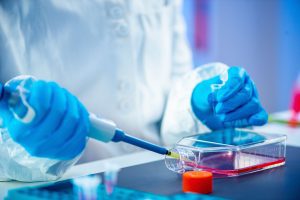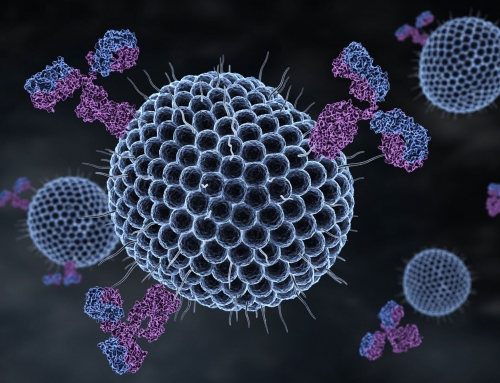Undaunted by the many challenges posed by biologics processing, developers continue seeking out new techniques.
Biopharmaceuticals (or biologics), while not exactly a new technology, are a fascinating and lucrative medical frontier to explore. The first medicine derived from a biological source dates back to the treatment of diphtheria in the 19th century, but the boom of biologics development that the world is experiencing today began in the 1980’s with revelatory advancements in recombinant DNA technology.
Pharmaceutical developers looking to explore the exciting opportunities that biologics offer will have to face many challenges. The process of taking a microbial (microorganism-sourced) biologic from inception to final product in a safe, time-efficient and cost-effective way is no simple feat. The first riddle developers must solve is during upstream processing, when the primary concern is how to best deliver nutrients into a batch in the exact quantities needed and at the precise times to maximize growth. For downstream processing, the main challenge is one of ensuring an unquestionably pure end product while still maintaining the greatest possible yield.
Although there is no quick fix or simple answer for the many complexities of the process developers will face, this article will explore some of the more common processing pitfalls and their workarounds.
Establishing proper nutrient supply in upstream development is the first major challenge developers must face.

At its core, the process of developing biologics from microbial sources is a two-way feedback system: put nutrients in, get metabolites and desired products out. The successful production of microbial biologics hinges on the development of a reliably stable process in a short amount of time. The upstream process is the stage of microbial growth required to produce the desired biomolecule for the end product. The two main keys to successful upstream processing are the identification of the nutrient condition that is most conducive to rapid microbial growth, and the detection of anything that might inhibit metabolism.
Nutrients and metabolites are a necessary component for cell growth, but if supplied in the wrong quantities or at the wrong times, they can actually inhibit cell growth and protein expression. For example, when a recombinant E. coli bacteria strain is used in the development of microbial biologics, the delicate balance and timing of nutrient input is especially critical. Because certain strains of E. coli flourish best when they have glucose as their single carbon source, the last piece of the puzzle is to optimize the nitrogen source. Pharmaceutical developers should carry out a fractional factorial experiment comparing the effectiveness of proline, ammonium phosphate, yeast extract and tryptophan to determine which acts best as a nitrogen source for the E. coli strain in question.
After establishing the kind of nutrient that most effectively supports microorganism growth, developers should switch focus to establishing the timing and amount of nutrient supply that is most conducive to cell growth. Although the common incremental-time-based manual fed-batch process is sufficient in getting the job done, a computer automated engineering solution is often the most efficient route in developing microbial biologics. For example, rather than having technicians manually adding in nutrients at staggered increments, a computer-controlled program could be developed to release a continuous-but-limited stream of nutrients into the batch, increasing nutrient input exponentially to exactly mirror microbial growth.
Finding the best purification method in downstream processing is one of the last daunting tasks for developers.

The final stage of microbial biologic development is downstream processing, which is essentially a process of purification and elimination. This phase is a critical component of the development of microbial biologics, as the purification must be impeccable to ensure a safe end product free from contaminants or any viruses. The initial extraction of the target biomolecule is generally achieved through filtration, sedimentation or centrifugation. For maximum purity, however, developers will need to use chromatography.
Although it is the gold standard for purification during downstream processing of microbial biologics, chromatography has major problems with cost-effectiveness and scalability in mass production settings. The search is ongoing for less expensive but similarly reliable purification methods, but one viable new process is magnetic separation with immunocapture supports, which researchers have found effective in both small laboratory settings and at an industrial scale.
Good laboratory practices in the small-scale research and development of microbial biologics will not always translate directly to effective methodology at an industrial scale. Switching to a factory setting means the introduction of more and different contaminants, as well as the possibility of trace elements that could act as inhibitors to cell growth. The key to avoiding these pitfalls is to involve expert contract manufacturing organizations (CMOs) as early in the process as possible. Investing early on in this kind of outside help will prevent immeasurable future headaches and expenses.
The use of biopharmaceuticals has skyrocketed over the last few years. In 2016, the number of biologics approved for human use by the European Medicines Agency (EMA) and the Food and Drug Administration (FDA) reached a total of 1,357. Because of their versatility and cost effectiveness, biopharmaceuticals derived from microorganisms make up a significant portion of those drugs. Despite the many complexities and difficulties associated with microbial biologics, pharmaceutical developers willing to team up with expert CMOs and rise to the challenge will be greatly rewarded for their struggles.




